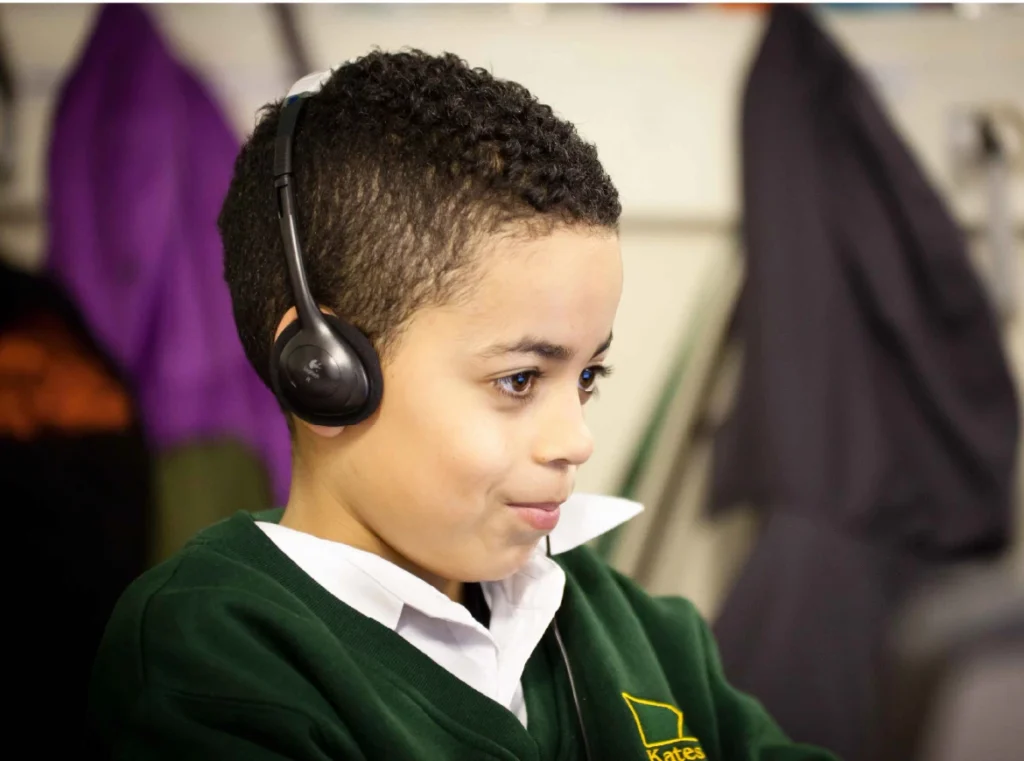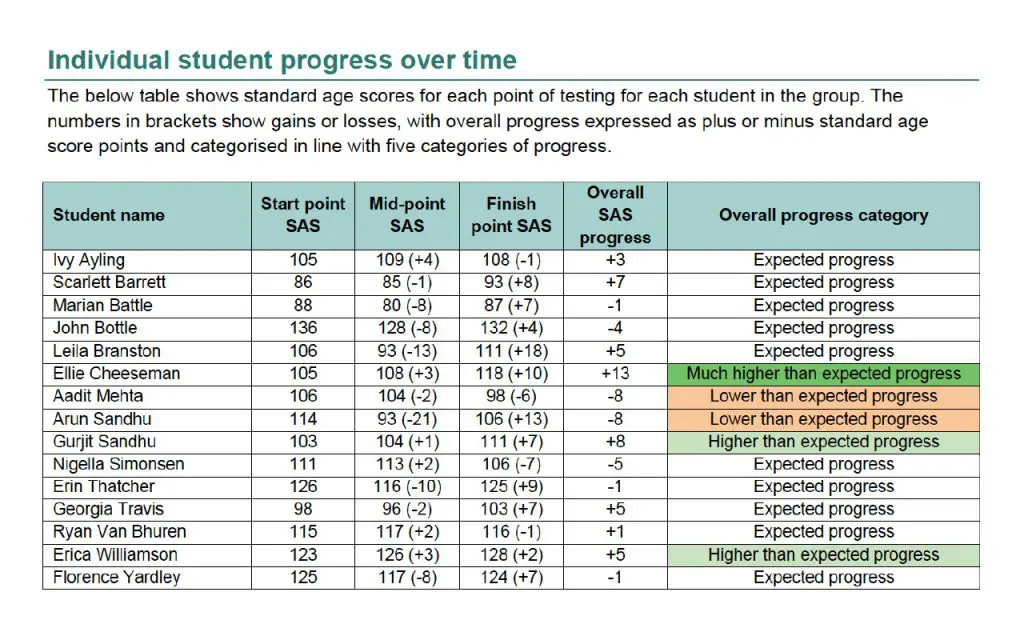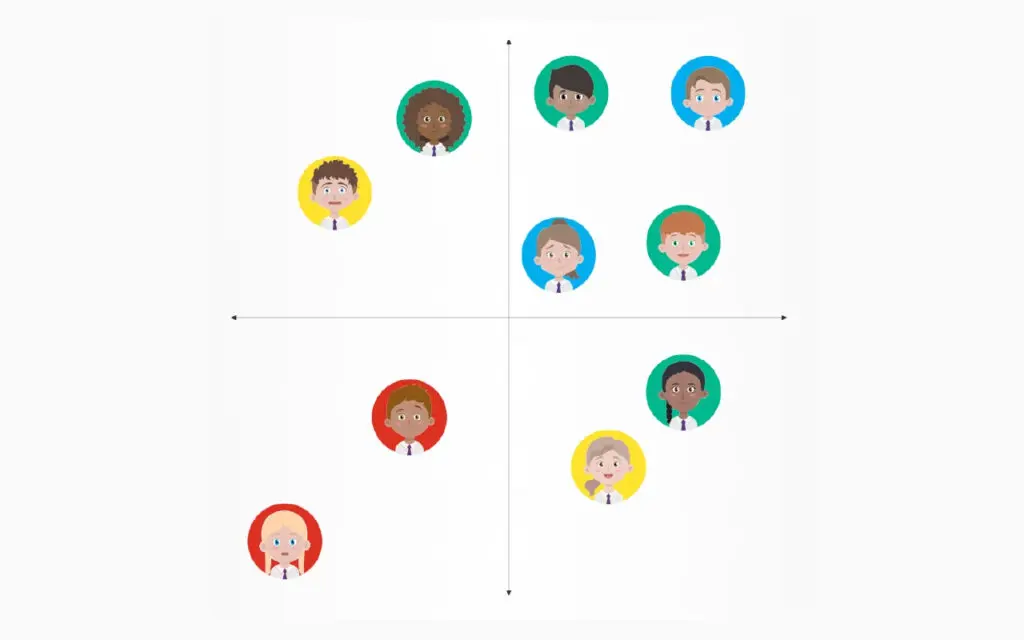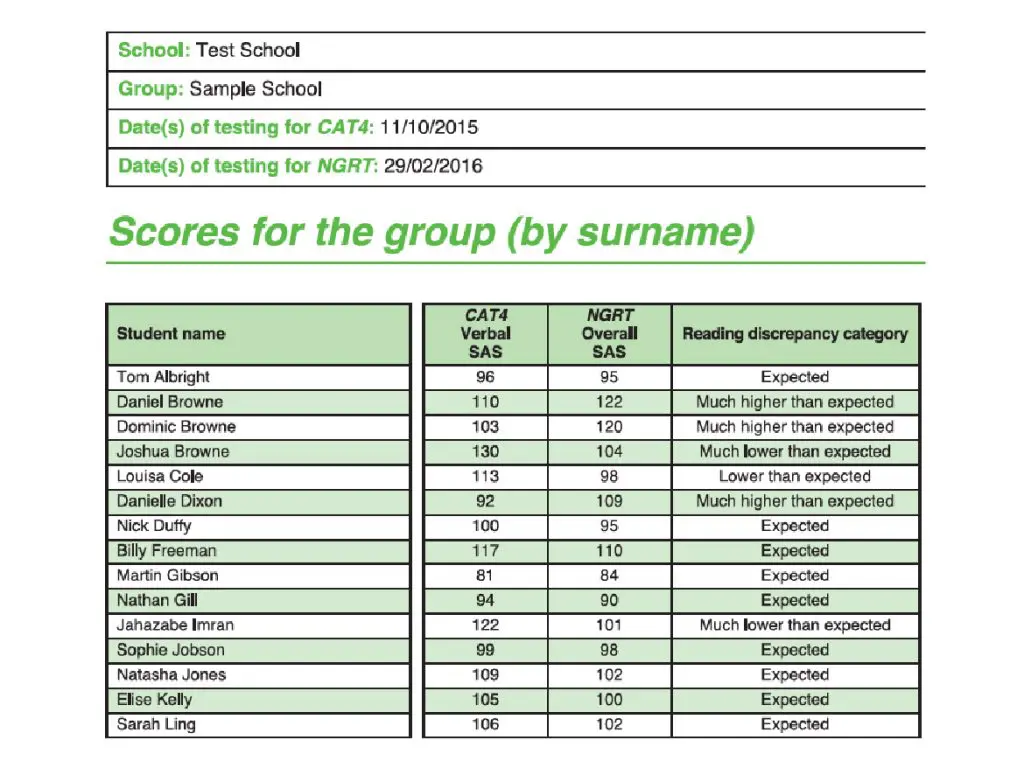A clear reading baseline
NGRT is standardised against a nationally representative sample of over 11,700 UK students, with benchmarks verified annually using data from almost half a million students. This ensures reliable, statistically robust comparisons. The Standard Age Score (SAS) is the key measure from NGRT, adjusting a student’s raw score for age and placing it on a national scale. This allows you to compare performance accurately across the UK.
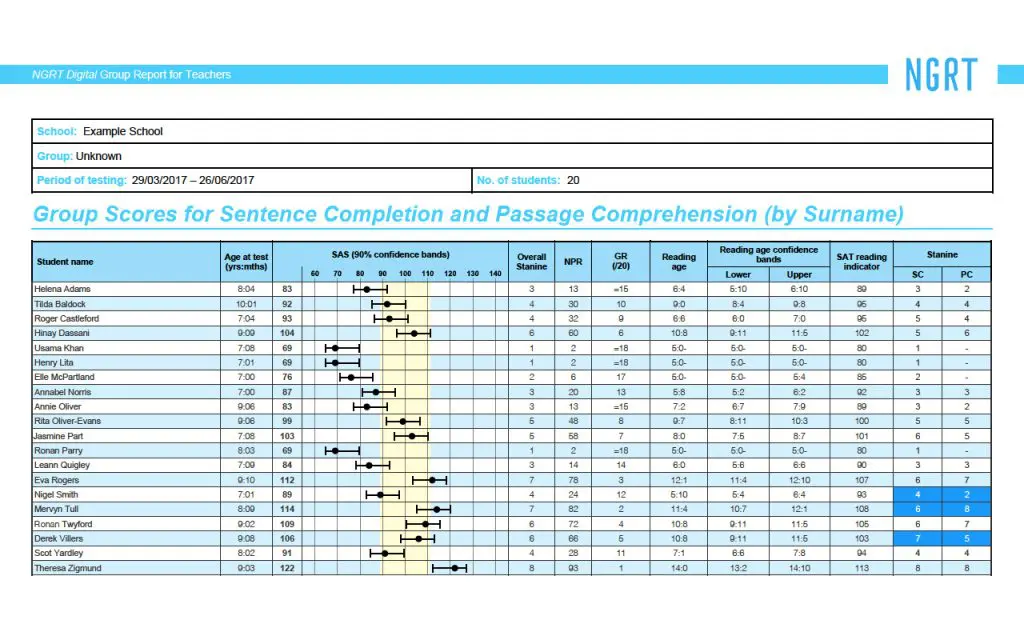
NGRT Group Report for Teachers
The NGRT Group Report provides the SAS for each student, along with a confidence band for every score. This instantly shows where individuals and the group sit in relation to the national average, helping you identify trends and target support where it’s needed most.
